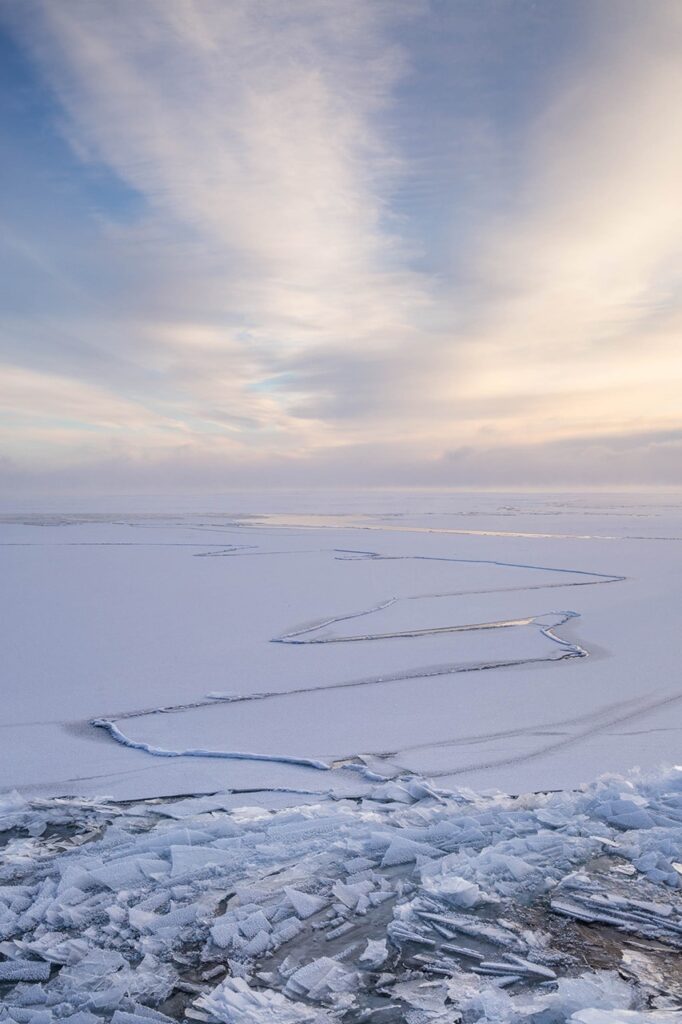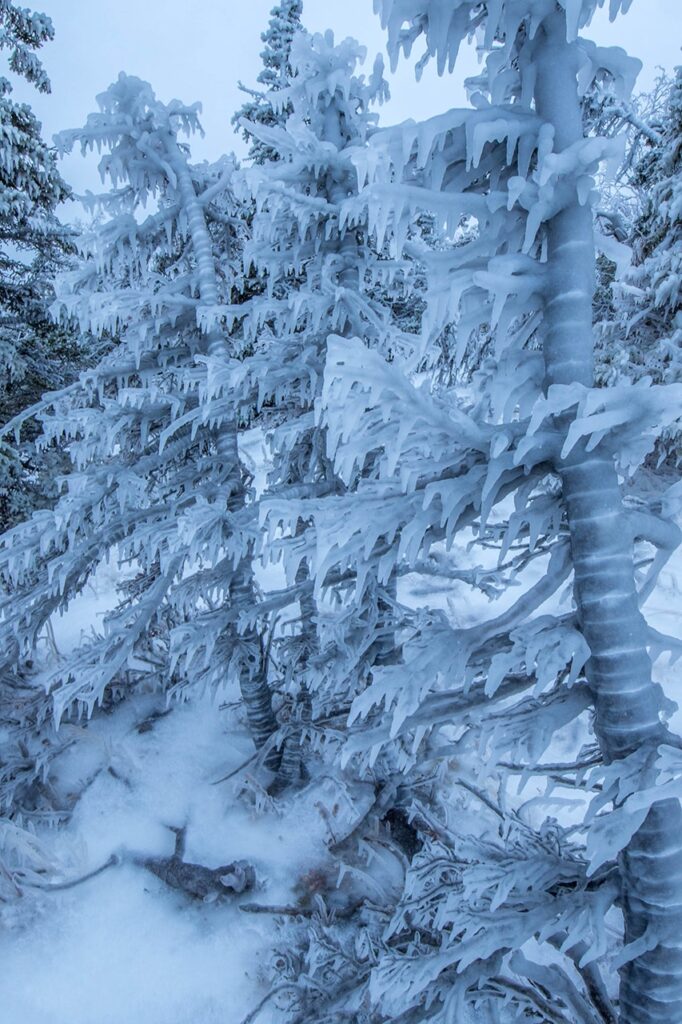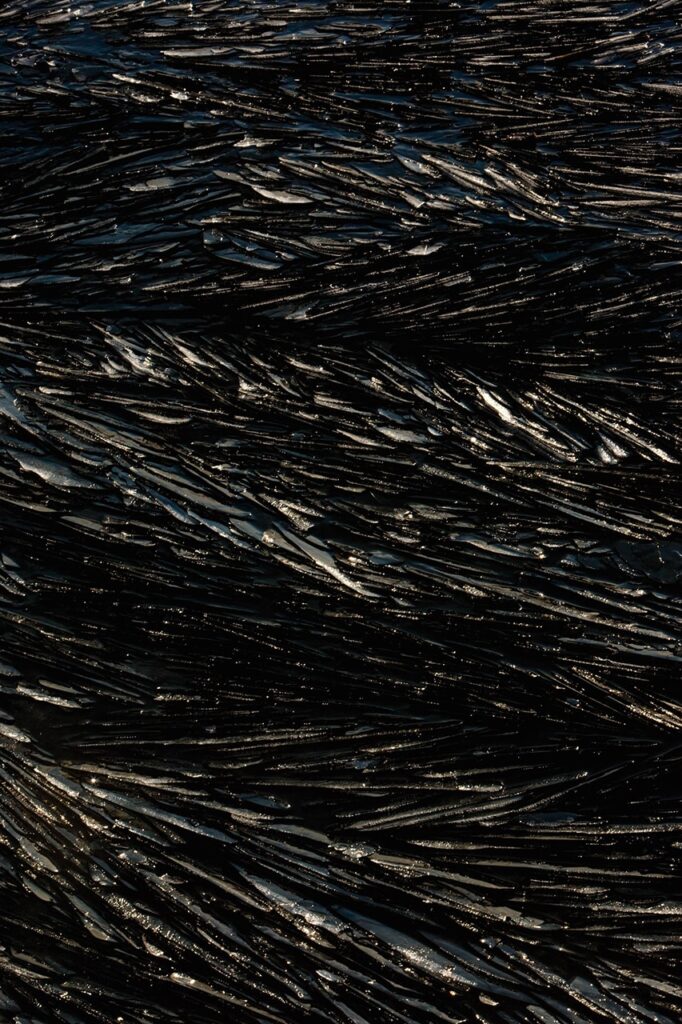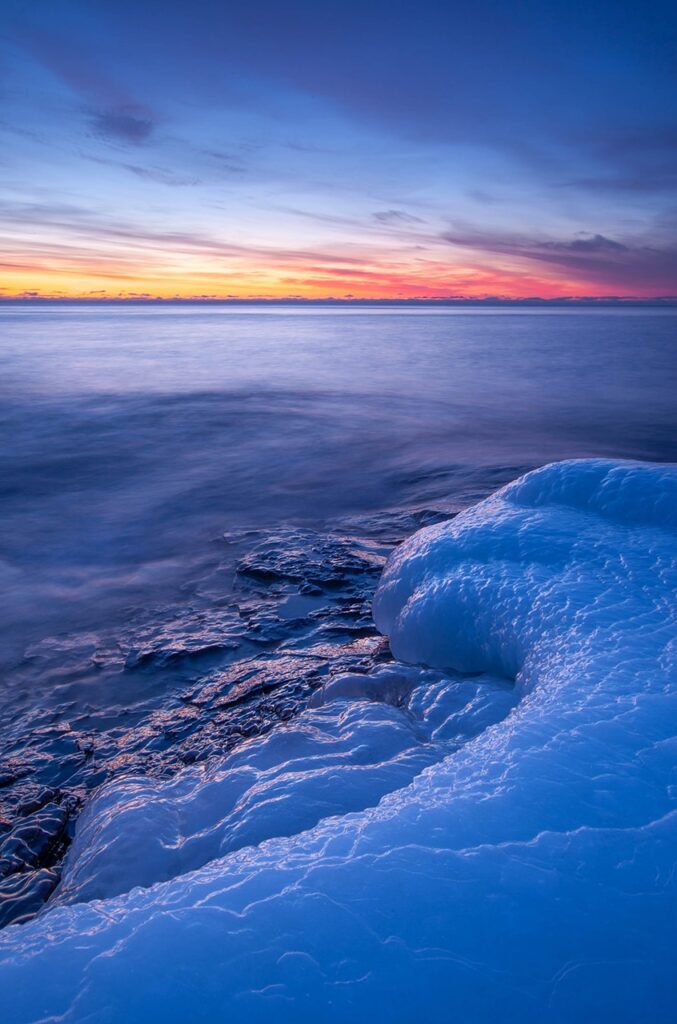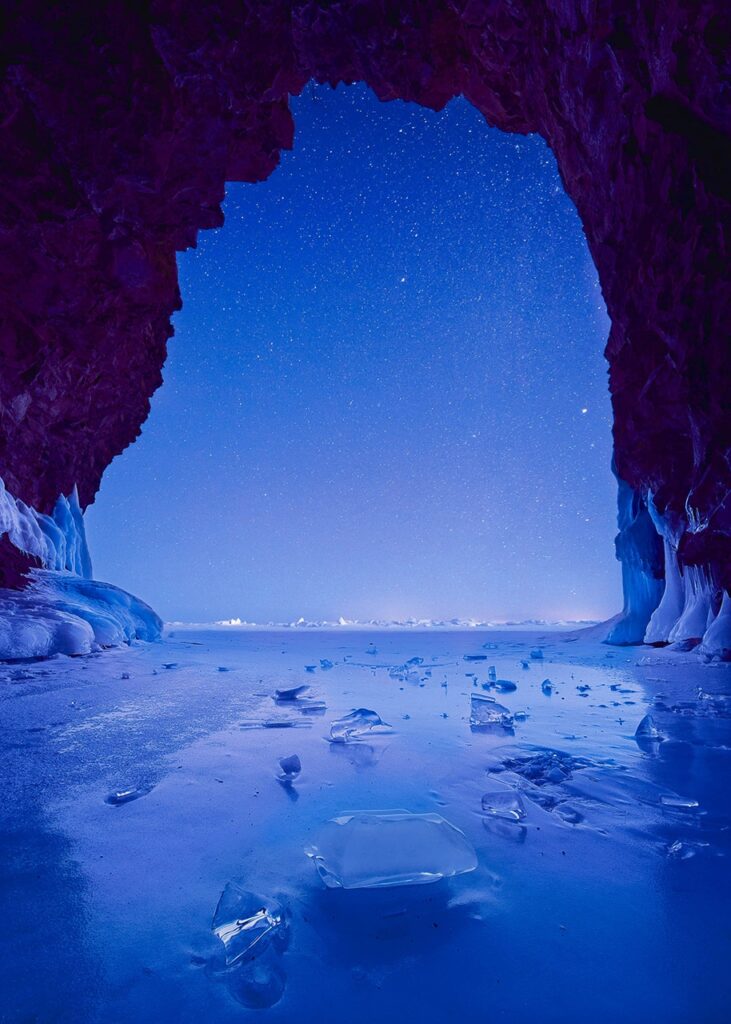I could hear the ice shattering like panes of glass as it came ashore. The snow squeaked with every step I took. It was -30°F without windchill and I felt like a marshmallow as I waddled down the shoreline. This is the closest I’ll come to being a penguin I thought to myself. I was covered from head to toe, not a piece of skin exposed, and surprisingly I was very warm. The severe cold transforms Lake Superior into an alien landscape. The rate at which ice accumulates can alter the appearance of the shoreline within hours depending on the wind. One moment you can see an endless expanse of skim ice and with a shift of the wind it can be gone, waves lapping the shoreline – sculpting ice as far as the eye can see.
I live for subzero temperatures, it heightens my senses and makes me feel alive in a way I cannot articulate. Maybe it’s the simple fact that one wrong choice can be your last choice, or maybe it’s the way the atmosphere, water and landscape respond to such cold.
My first true experience with severe cold was during the polar vortex of 2014. Sure, I had experienced temperatures of -30°F while living in Bemidji, but I hadn’t spent any significant time out in the elements. It was New Year’s Eve 2013 and a balmy -24°F on Lake Superior. I had long wished to photograph “pancake ice,” but had never encountered the conditions required for it to form. It takes a recipe of extreme cold and gentle wind, though not too gentle or the surface of the lake freezes solid, and not so strong that the ice breaks up. Skim ice blows ashore slowly, breaking into large chunks. The subtle wind then forces the ice to grind against adjacent pieces, slowly rounding the edges into discs. These discs then get thicker and stronger as they undulate in the moving water. The sound of this process is bone-chilling, yet hauntingly beautiful. I spent three hours running around like a madman trying to capture the perfect image of this, and I walked away in pure bliss and with frostbitten fingers. This was just beginning, and I had no idea what the subzero temperatures had in store for the rest of winter.
As the winter progressed, Lake Superior and the surrounding landscape continually transformed.
Each day presented something new and exciting, especially when the lake froze over. For the first time in my life I had the opportunity to wander the frozen surface of this magical lake. The groaning and cracking of ice as it shifted filled the never ending icy expanse. I was finally able to explore sections of shoreline that are usually inaccessible. As amazing as this was, the sense of elation was faintly shrouded with fear, knowing that a strong wind could break apart the ice or a weak point in the ice could result in my demise. So with that in mind. I kept relatively close to shore, and close proximity to my vehicle or a shelter, possibly a moot point considering it was typically -20F or colder while exploring, but it provided a false sense of safety that allowed me to continue doing my work.
Lake Superior skim ice comes ashore in -30°F, Grand Portage, Minnesota. Ice covered trees on the cliffs of Tettegouche State Park. Ice coming ashore during the spring thaw. Unique ice formations at Artists Point. Grand Marais, MN.
On one particular evening that sense of safety wasn’t enough. Despite warnings from a friend, I decided to venture into a sea cave to capture the stars over the lake. The combination of the groaning ice, the fact that the water was 12’ deep, and temperatures hovering around -30°F, heightened my anxiety and fear and I abandoned my plans. The following day I devised a plan to execute my vision as safely as possible. I returned that evening and set up my camera in the cave while there was still enough light to compose my shot. I then left the frozen expanse of the lake and hiked the shoreline to stay warm. As the stars were beginning to twinkle I returned and executed my shot.
Subzero temperatures aren’t required to experience the magic of ice, and in some ways I think is a disservice.
While polar temperatures provide great variation in ice accumulation, rapid evolution of the landscape, and fascinating atmospheric phenomena, the prolonged subzero temps eventually leave us in a cold, still, and silent world. Rivers and waterfalls freeze solid, Lake Superior is in a slumber, it is almost too quiet. Slightly warmer temperatures coupled with the periodic subzero temps allow us to enjoy the the gradual accumulation of ice and mercurial moods of our great lake while minimizing the possibility of frostbite. The sound of crashing waves, babbling creeks, and roaring waterfalls can still be heard and possibly seen. Regardless of the weather, studying ice is a worthwhile pursuit. The sounds, textures, shapes and way light plays off its surface provide infinite possibilities for visual and auditory experiences. As winter progresses, we look forward to wandering the frozen surfaces of our lakes, sit along rivers, and study the shoreline of Lake Superior as winter artistically transforms it before our eyes.
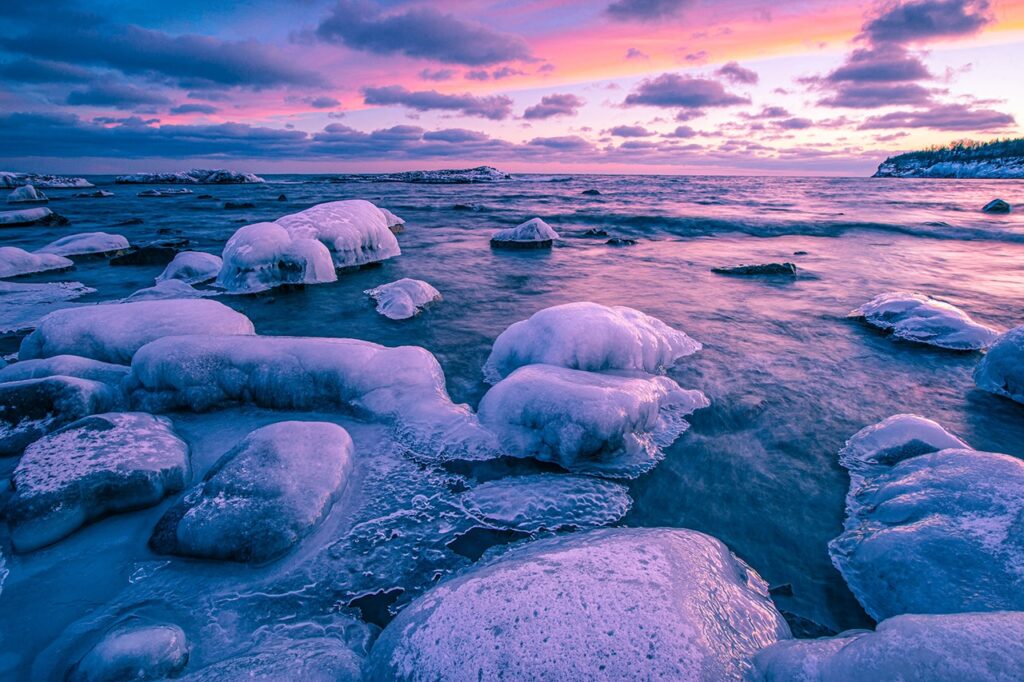
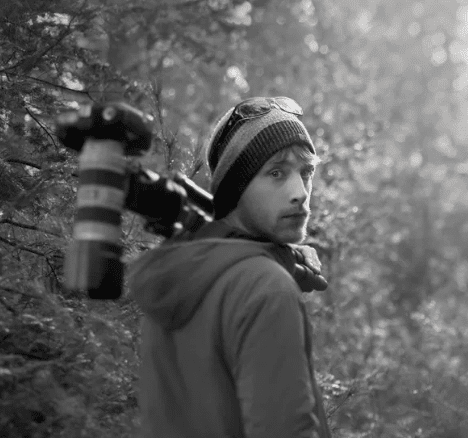
Editor’s Note:
The Minnesota DNR cautions “Ice is never 100% safe” – before venturing out, check their web site for more information on ice safety and when in doubt, stay off ice. Winter temperatures are also a hazard. The CDC has information about venturing outside, how to prepare for the cold, what to know about frostbite and hypothermia.







